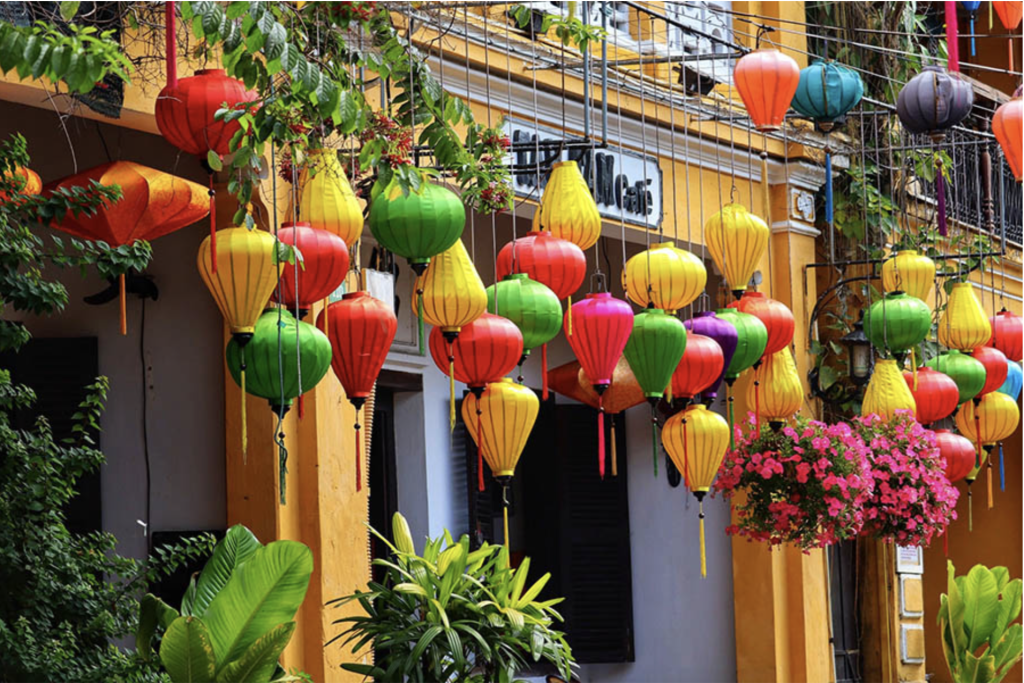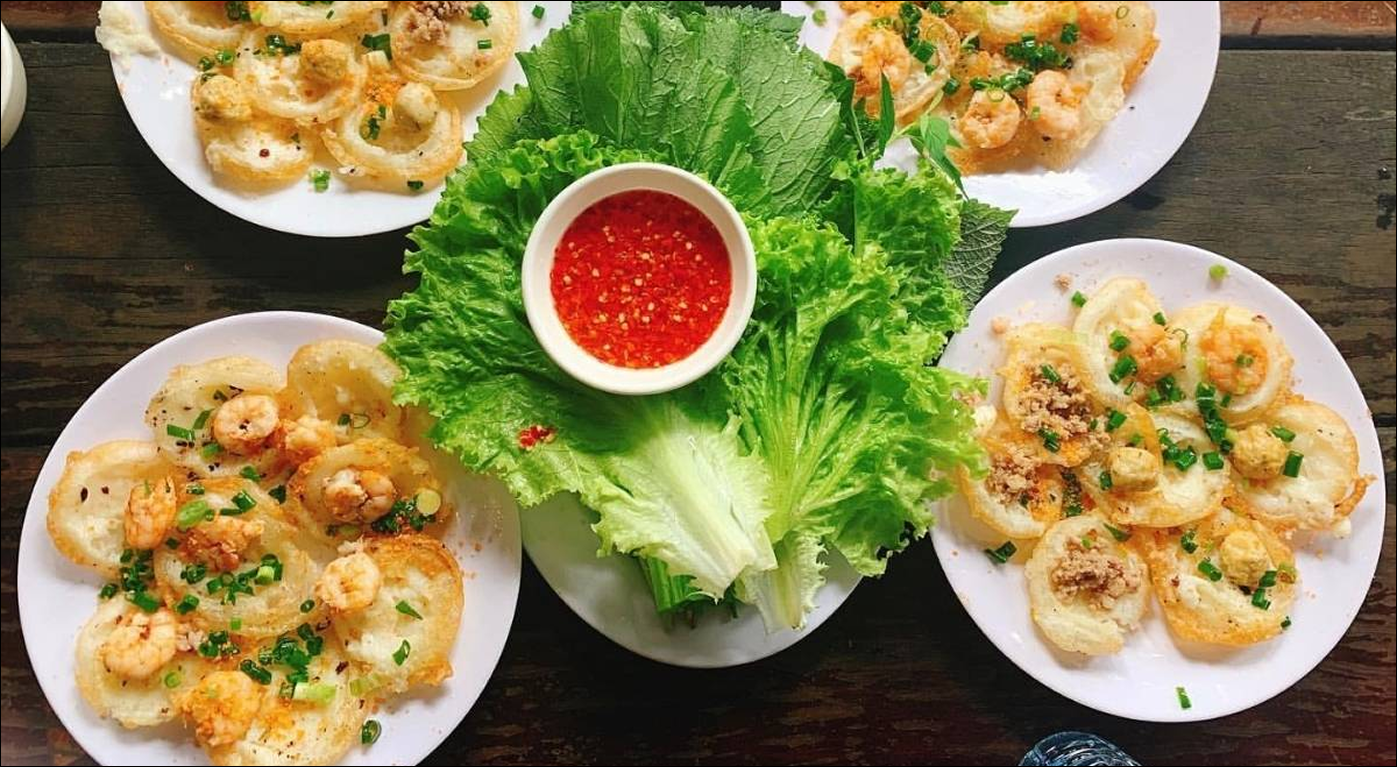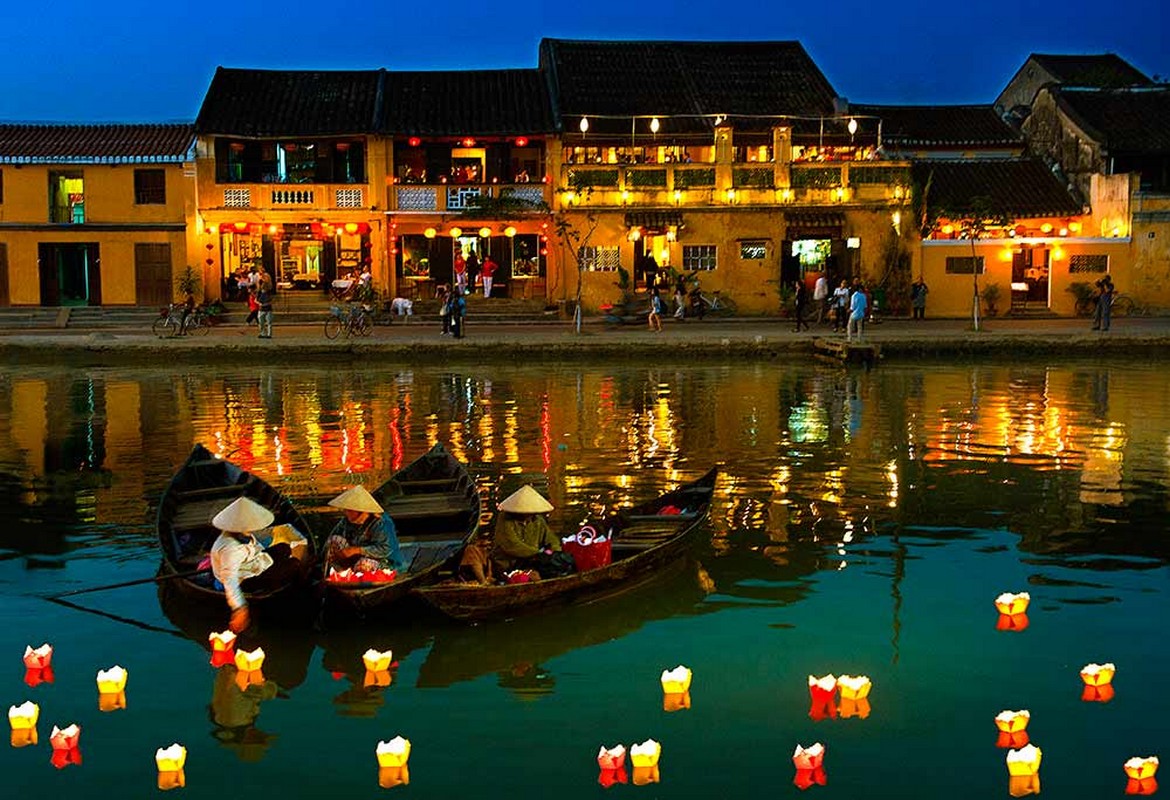Hoi An is well known for its enchanting and shimmering lanterns, which create a very poetic and romantic atmosphere. This tour guide will show you where to see and experience the special lantern culture in the ancient town, as well as help you discover the meaning behind the dazzling beauty of Hoi An lanterns.
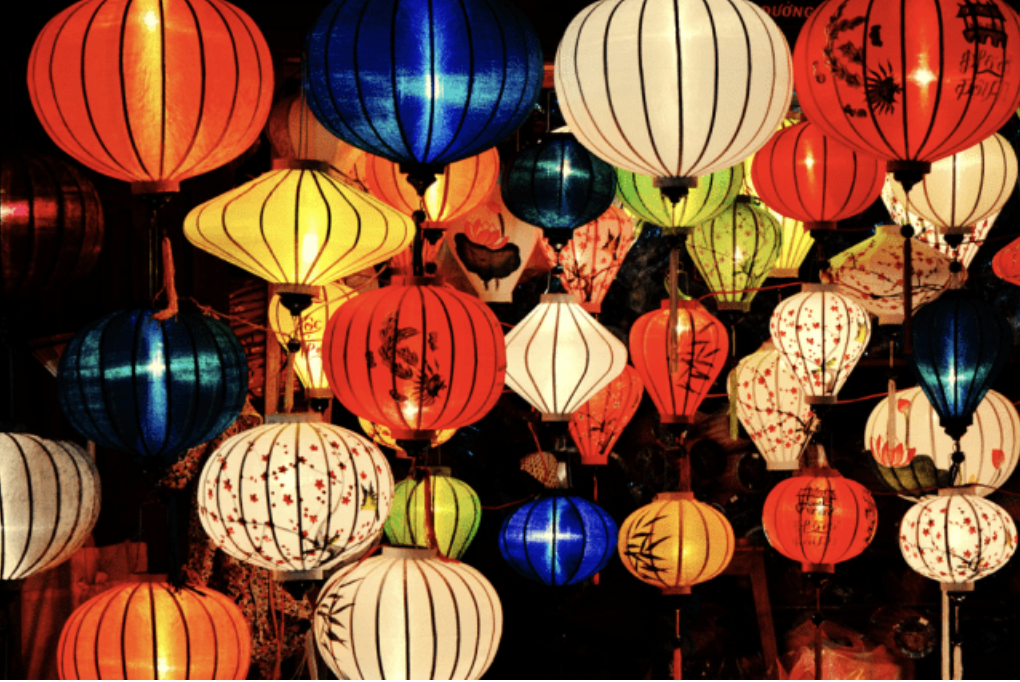
Hoi An lantern – an iconic symbol of the ancient town
People frequently associate Hoi An with visions of glimmering, enchanted lanterns, tiny lanes shaded by areca blossoms, and historic homes. In addition to being decorations, Hoi An lanterns are distinctive cultural icons that add to this town’s allure.
The significance of Hoi An lanterns
In addition to being exquisite ornaments, Hoi An lanterns have deep cultural significance. The lantern’s light symbolizes human brightness as well as aspirations for a happy life. Furthermore, hanging lanterns at pagodas and churches is a sign of respect and a request for good fortune and serenity from the gods.
Lantern colors also convey messages of their own. Green lanterns stand for peace and health; red lanterns for luck, plenty, and prosperity; and golden lanterns for wealth and money.
Places to see the most brilliant lanterns in Hoi An
Hoi An has long been famous for its shimmering and magical lanterns, creating an extremely romantic and poetic scene. Below are some of the most brilliant lantern-viewing locations in Hoi An that you should visit:
1. Hoi An ancient town
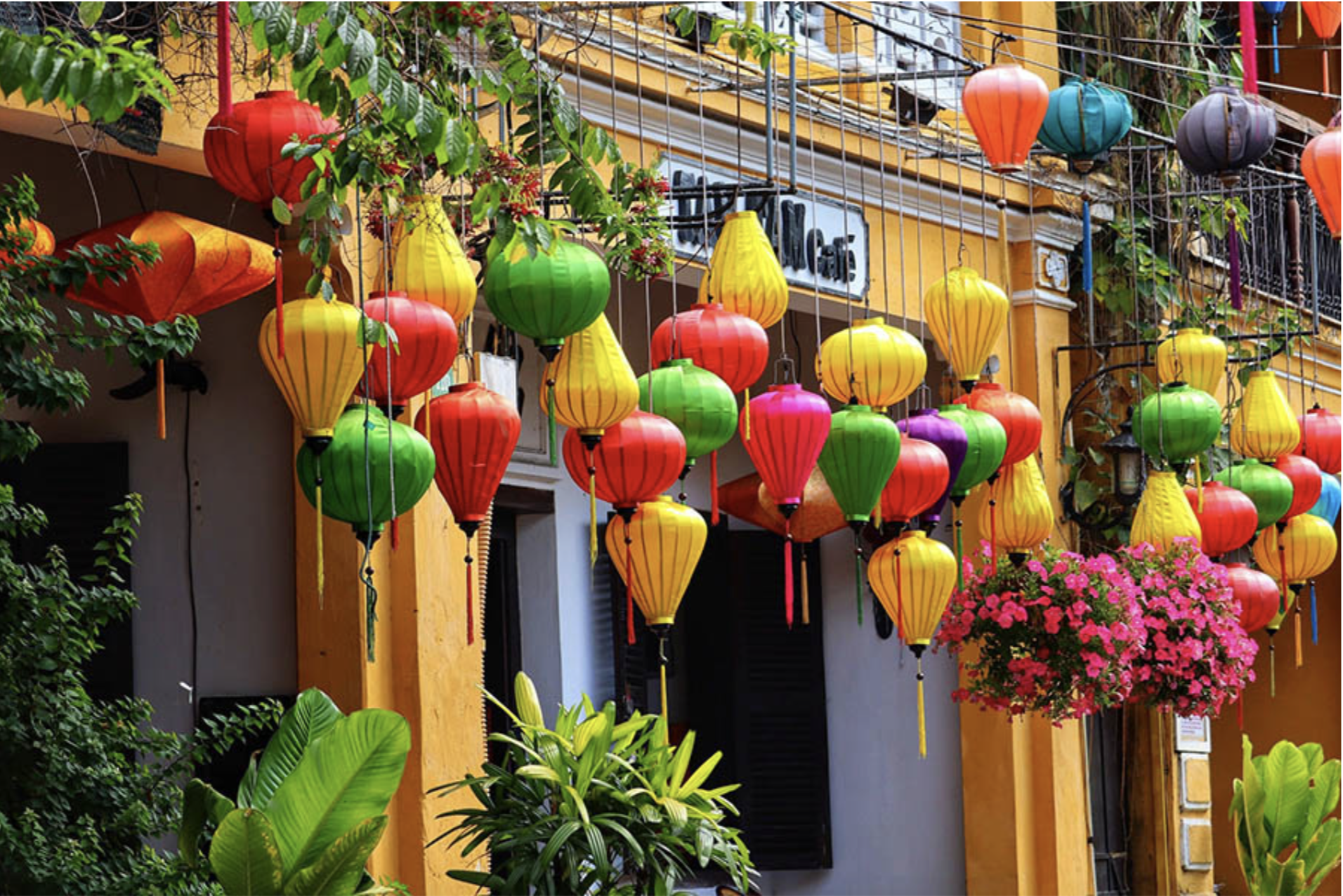
When traveling Hoi An, this is the spot where visitors are most accustomed to seeing lanterns. Every lunar month on the fourteenth, thousands of colorful lanterns are lit up in Hoi An, an ancient village that makes for a really striking sight.
You can stroll through narrow streets, snap pictures with lanterns, or engage in other amusing activities like lantern releases, Hue song listening along the Hoai River, etc.
2. Pagodas in Hoi An
Lanterns are also exquisitely decorated at several of the well-known pagodas in Hoi An, including the Cau, Ba Mu, and Ong pagodas. You have the chance to learn about the history, culture, and architecture of these old temples in addition to seeing lanterns.
3. Nguyen Phuc Chu Street
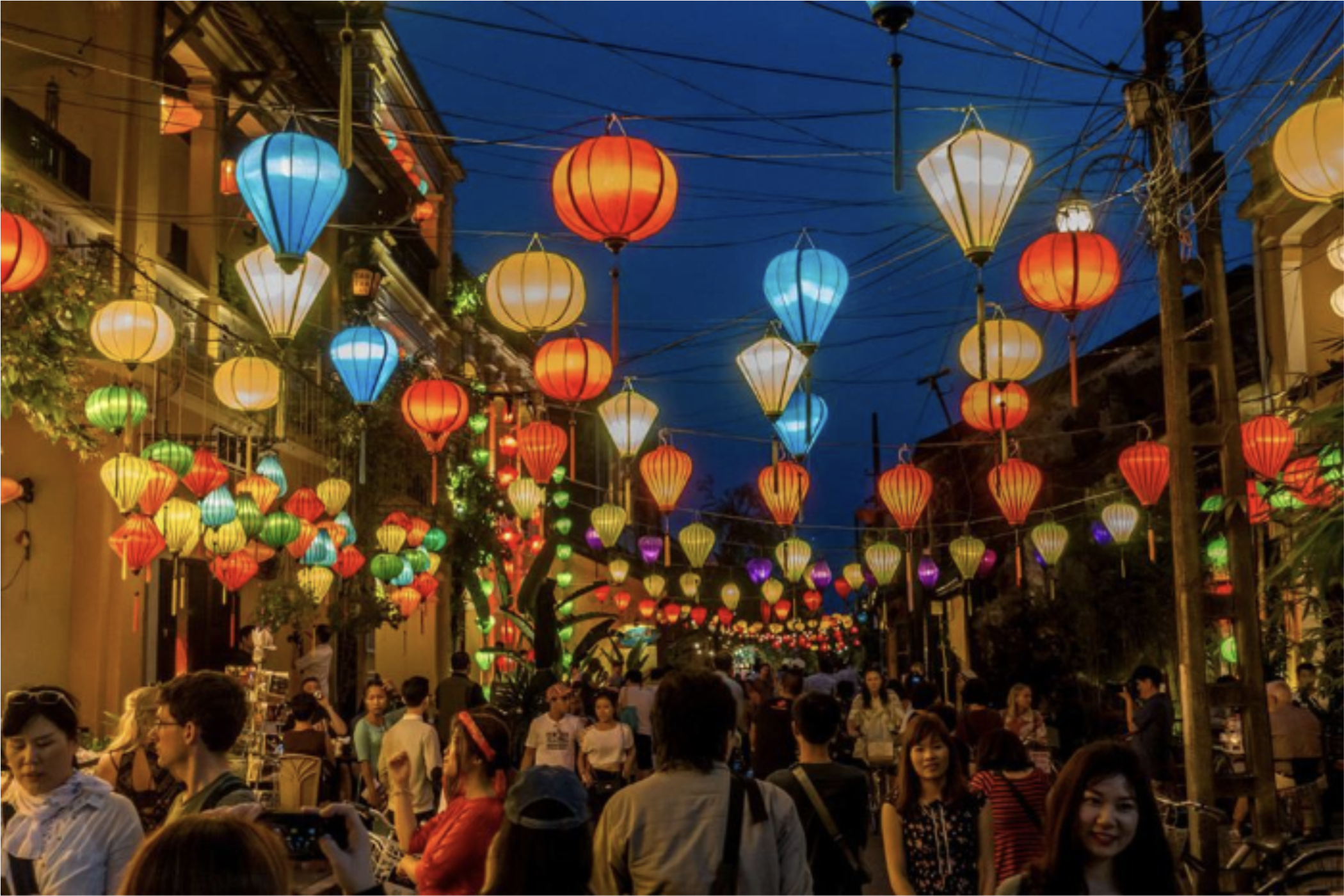
“Lantern Street” is the name of this well-known Hoi An pedestrian thoroughfare. Thousands of lanterns that are suspended along both sides of the street at night transform this street into a dazzling and enchanted place. Here, you can stroll, snap pictures, and eat street cuisine.
Furthermore, there are numerous stores that sell lanterns in a wide variety of colors and designs. These lanterns are available for purchase as house décor or as mementos.
4. Japanese Bridge
This ancient bridge is a symbol of Hoi An and a beautiful lantern-viewing spot. At night, the Japanese bridge is lit by lanterns, creating an extremely romantic scene. You can stand on the bridge to see the panoramic view of Hoi An ancient town sparkling at night.
Explore the lantern-making tradition in Hoi An
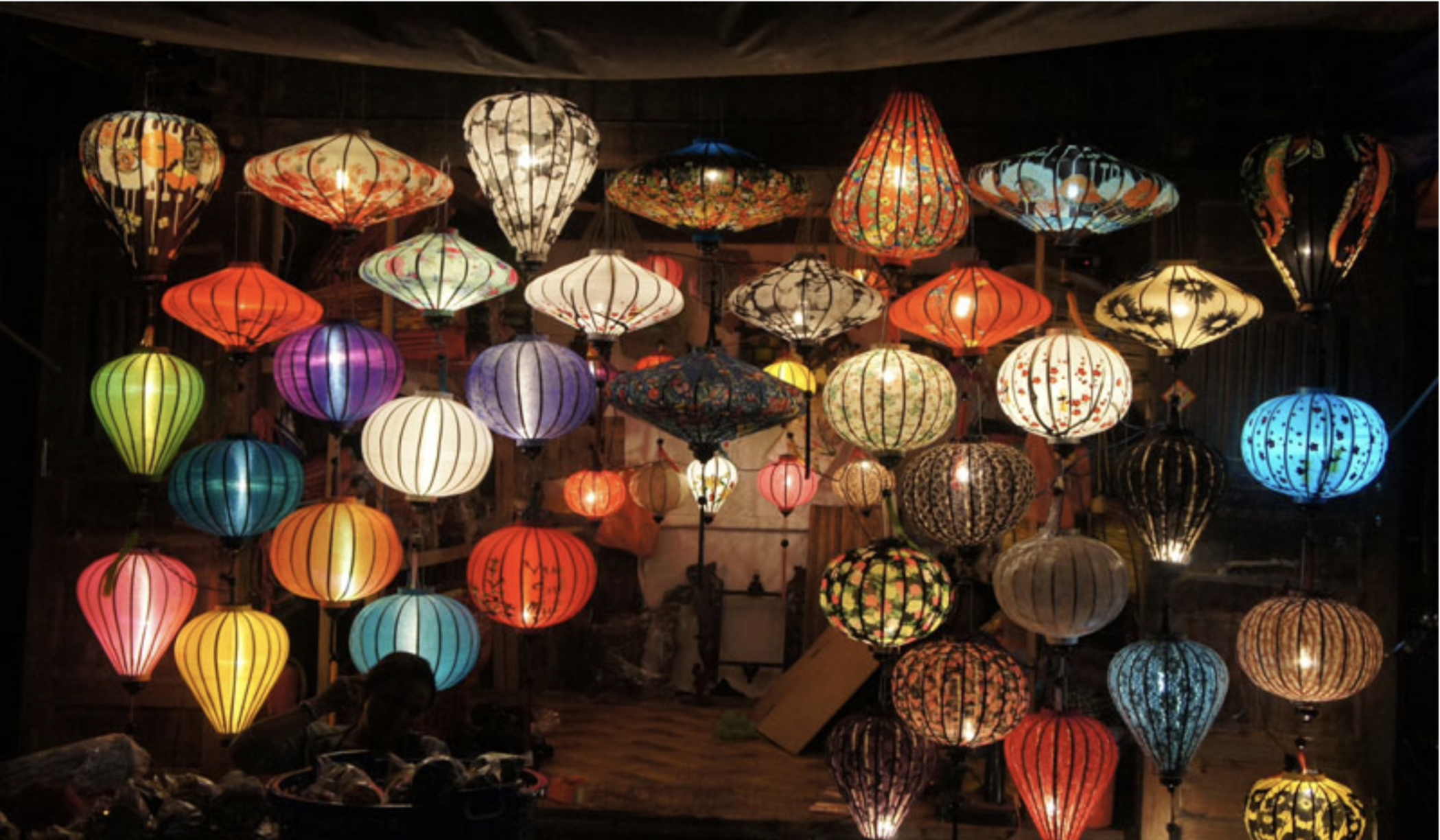
The production of Hoi An lanterns has been a vital component of the ancient town’s culture for over 400 years. A competent, exacting, and committed artisan is needed to create a stunning and elegant Hoi An lantern. There are numerous phases involved in manufacturing lanterns, from selecting materials to embellishing.
Materials for making lanterns:
- Bamboo: Bamboo for making lanterns is chosen to be old, fresh, and guaranteed to avoid termites. After selection, the bamboo is cooked and soaked for 10 days in salt water to increase durability and prevent termites. Next, the bamboo is dried and thinned according to each type of lantern.
- Fabric: The fabric covering the outside of Hoi An lantern is silk or ruby fabric. The color of the fabric will determine the light of the lamp, so the artisan will make careful choices.
Lantern making process:
- Step 1: Shape the frame – To form the lantern frame, use bamboo slats and join them using parachute cords. There are numerous shapes that lantern frames can take, including square, hexagonal, and spherical.
- Step 2: Glue the fabric – Cut the fabric according to the size of the lamp, then apply glue and stick it around the frame. Use scissors to carefully trim excess fabric to create a beautiful border.
- Stage 3: Decoration – This is the final and most crucial stage in giving the lantern a distinctive beauty. Lanterns can be adorned by artists in a variety of methods, including painting, stitching, beading, and more. Decorative motifs are frequently connected to traditional Vietnamese culture or denote good fortune.
Hoi An lantern making is not only a traditional craft but also a symbol of the spirit and cultural values of the people of the old town. The artisan’s passion and inventiveness are embodied in each lantern, adding to the ethereal and enchanting allure of Hoi An’s historic town at night.
Enjoy the time at Hoi An Lantern Festival on your trip
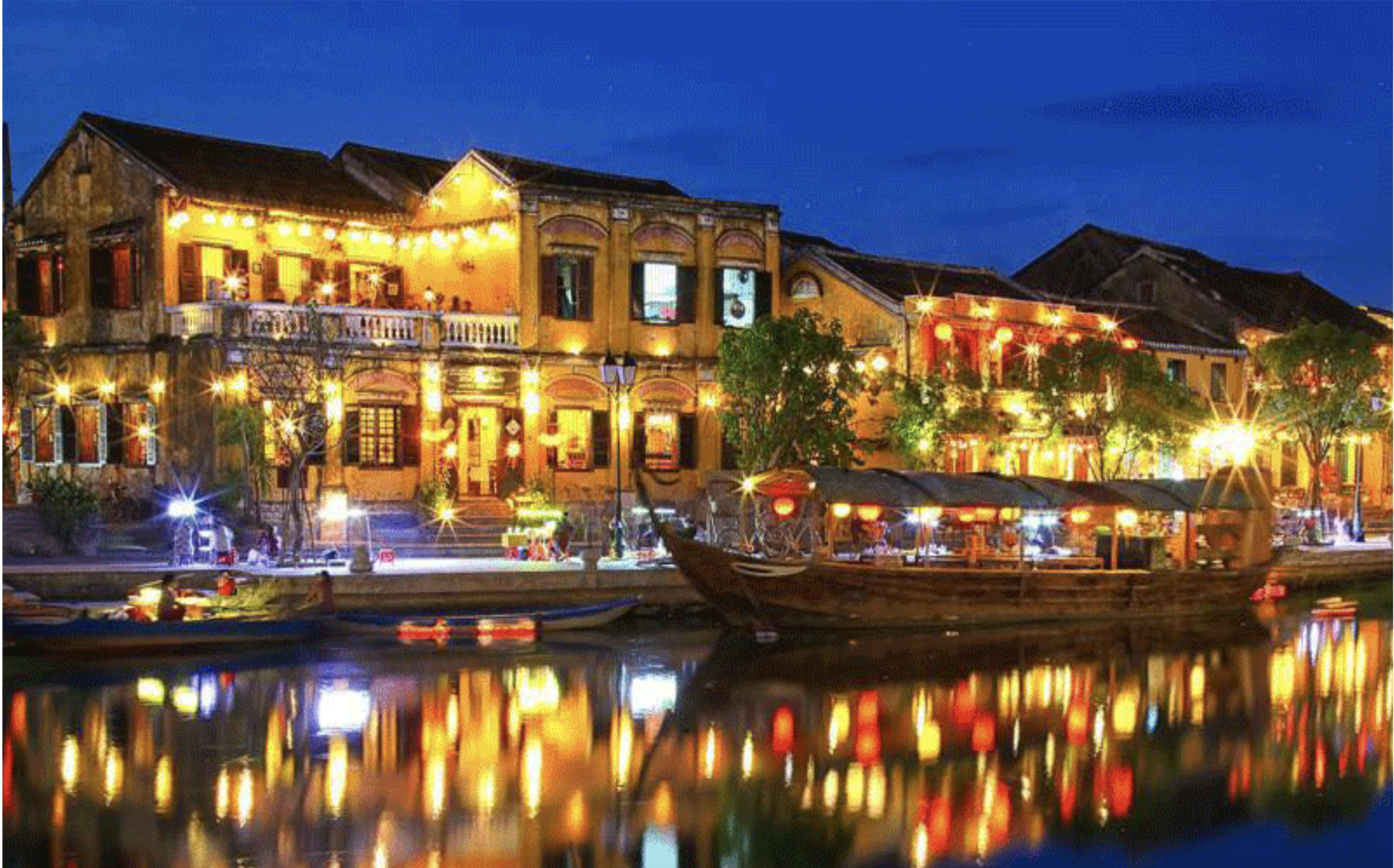
Following receiving instructions about Hoi An lanterns and the locals’ custom of creating lanterns, Vietnam Tour 247 will recommend the most comprehensive 2-day, 1-night itinerary for your exploration of Hoi An.
- Day 1:
7am: Enjoy breakfast with Hoi An specialties such as Cao Lau, Quang noodles, Phuong bread,…
8am: Visit the Hoi Discover the historic buildings, mossy homes, and narrow, twisting streets of this medieval village.
10am: Visit Hoi An’s emblem, the Cau pagoda, snap some mementos, and offer up a prayer for prosperity and serenity.
11am: Visit Tan Ky ancient house, and learn about the culture and history of Hoi An.
12pm: Enjoy lunch alongside other signature dishes from Vietnam, such as Banh Xeo, Banh Beo, and Ba Buoi chicken rice.
2pm: Participate in the lantern festival, and release flower lanterns to pray for luck and peace.
4pm: Visit Tra Que Vegetable Village, learn about growing vegetables, and enjoy dishes made from Tra Que vegetables.
6pm: Enjoy dinner with fresh seafood dishes at An Bang beach area.
7pm: Stroll Hoi An night market, shop for souvenirs, and enjoy street food.
8pm: Watch traditional art performances at the Fujian Assembly Hall.
9pm: Releasing flower lanterns to pray for good luck on the Hoai River.
Day 2:
7am: Enjoy breakfast with Hoi An specialties.
8am: Take a tour of Thanh Ha Pottery Village to discover the art of traditional pottery manufacturing and to purchase ceramic goods.
10am: Take a boat ride among the rows of nypa fruticans trees at Bay Mau Coconut Forest and savor some fresh nypa fruticans.
12pm: Enjoy lunch with other Hoi An specialties.
2pm: Visiting Ba Mu Pagoda to pray for children and fortune.
3pm: Shop for souvenirs at shops selling handicrafts.
4pm: Check out of the hotel, go to the airport/train station to go home.
These are some recommendations for a two-day, one-night trip to Hoi An. You can count on it to change in accordance with your schedule and tastes. Please get in touch with Vietnam Tour 247 if you want to visit Hoi An but are unsure where to begin. With a wealth of knowledge in planning excursions to Hoi An, we’re dedicated to providing you with:
- Attractive tour schedule, suitable to your needs and preferences.
- Competitive prices, and professional service.
- Enthusiastic and thoughtful staff, always ready to support you anytime, anywhere.
Please contact Vietnam Tour 247 today for free advice and support!

In addition to being a historic town with special cultural and historical significance, Hoi An is a site that, thanks to its enchanting, glittering lanterns, has managed to capture the essence of Vietnamese beauty. Visit Hoi An to experience the enchanted shimmering space of the lanterns, to sense the traditional cultural values, and to capture priceless moments.
Readmore: Best Of The Central Vietnam From Hoi An | Authentic Discovery – 06 Days

